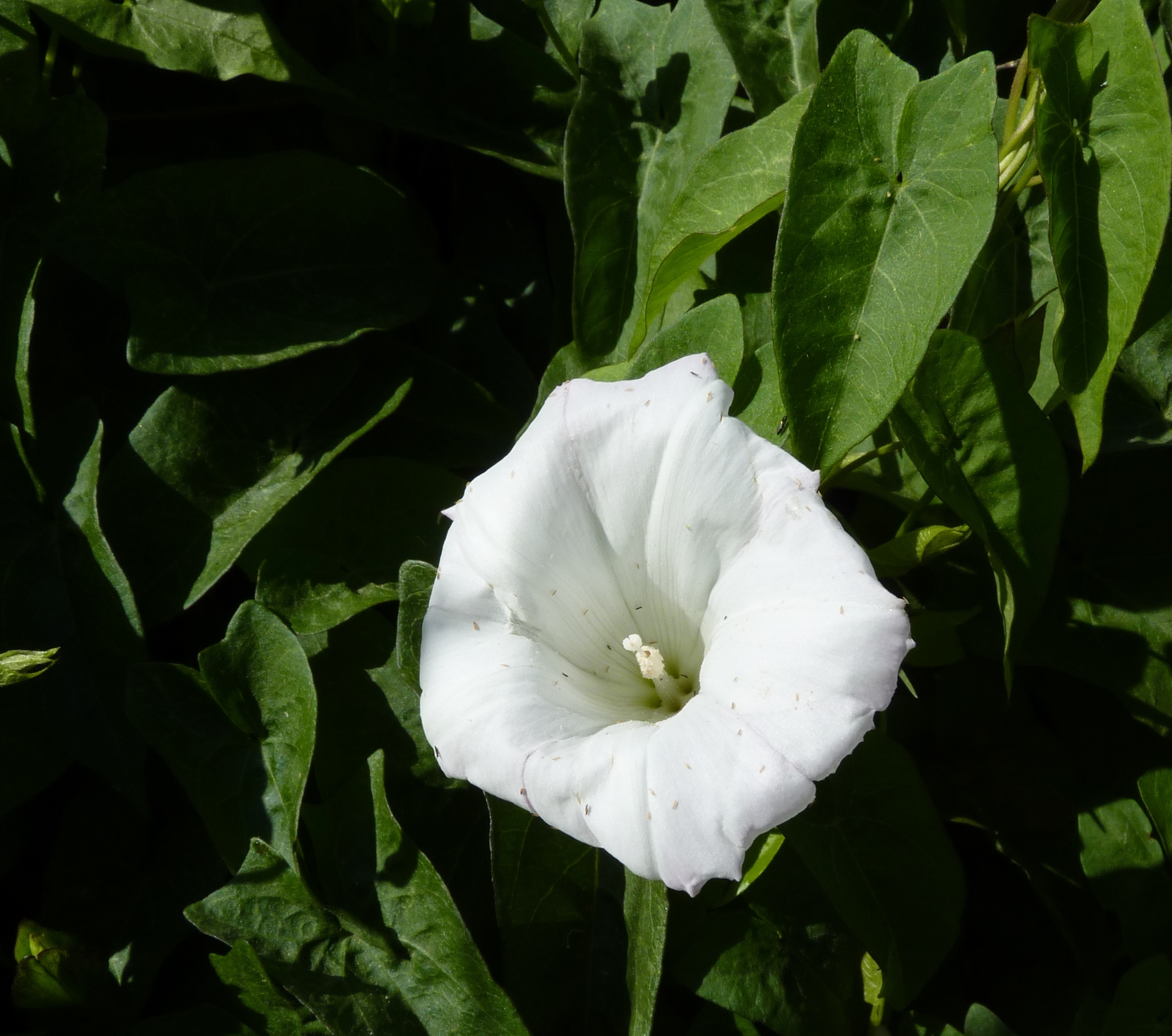
Greek kalyx — sepals, stege — covering, referring to the large calyx bracts.
Perennial herbs with trailing or twining stems. Leaves simple, entire, often arrowhead-like. Flowers axillary, solitary or few together and with large persistent bracts that more or less enclose the ovary. Petals more or less funnel-like, sometimes shallowly 5-lobed, with pronounced mid-petal bands. Stamens fused at the base, hairy on fused edges.ovary of 1-2 chambers, ovules 4. Fruit capsule round to ovoid.
A genus known for C. sepium, a weed of waste places, mostly in urban areas.
C. sepium has edible young leaves and rhizomes (when boiled).
Differs from Convolvulus in having solitary flowers with large bracts and 1-chambered fruits.
25 cosmopolitan species.
Source: (2002). Convolvulaceae. In: . Horticultural Flora of South-eastern Australia. Volume 4. Flowering plants. Dicotyledons. Part 3. The identification of garden and cultivated plants. University of New South Wales Press.
